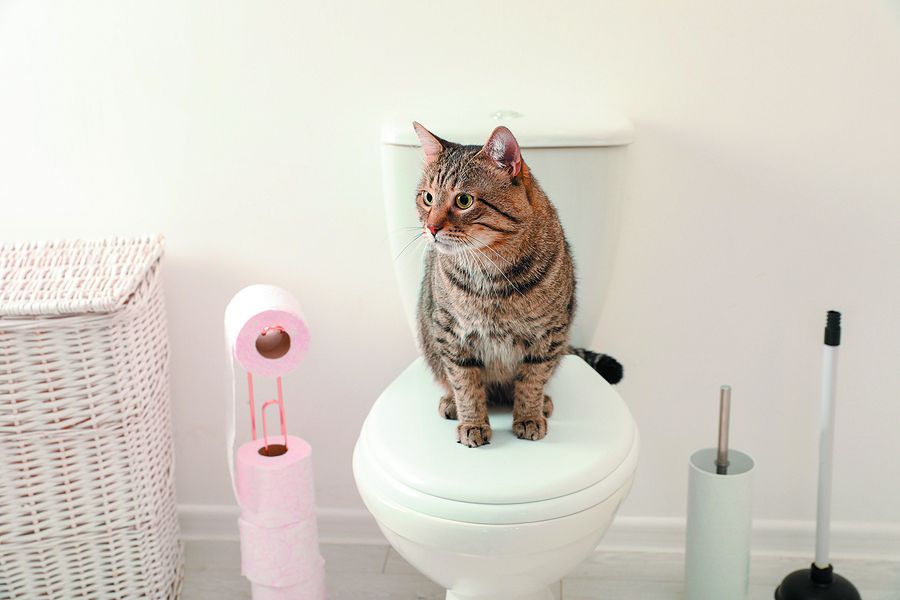Just about everyone will have their unique theory when it comes to How to Dispose of Cat Poop and Litter Without Plastic Bags.

Introduction
As cat owners, it's essential to bear in mind just how we deal with our feline good friends' waste. While it may seem convenient to flush cat poop down the toilet, this practice can have damaging repercussions for both the setting and human wellness.
Alternatives to Flushing
The good news is, there are much safer and extra liable means to throw away feline poop. Take into consideration the adhering to choices:
1. Scoop and Dispose in Trash
The most typical technique of getting rid of feline poop is to scoop it into a biodegradable bag and throw it in the garbage. Be sure to make use of a committed trash scoop and throw away the waste without delay.
2. Use Biodegradable Litter
Opt for eco-friendly feline trash made from materials such as corn or wheat. These clutters are environmentally friendly and can be safely thrown away in the garbage.
3. Bury in the Yard
If you have a lawn, take into consideration burying pet cat waste in a designated area far from vegetable yards and water resources. Make certain to dig deep adequate to avoid contamination of groundwater.
4. Install a Pet Waste Disposal System
Invest in a family pet waste disposal system especially made for feline waste. These systems use enzymes to break down the waste, decreasing odor and environmental effect.
Wellness Risks
Along with environmental concerns, purging cat waste can additionally posture health and wellness risks to humans. Cat feces may contain Toxoplasma gondii, a bloodsucker that can cause toxoplasmosis-- a potentially severe ailment, specifically for expecting ladies and individuals with damaged immune systems.
Environmental Impact
Purging pet cat poop introduces harmful pathogens and bloodsuckers right into the water system, presenting a significant danger to marine ecological communities. These contaminants can negatively influence marine life and compromise water quality.
Verdict
Liable pet dog ownership extends past providing food and shelter-- it additionally entails appropriate waste monitoring. By refraining from purging pet cat poop down the commode and choosing different disposal approaches, we can lessen our ecological impact and shield human wellness.
Why Can’t I Flush Cat Poop?
It Spreads a Parasite
Cats are frequently infected with a parasite called toxoplasma gondii. The parasite causes an infection called toxoplasmosis. It is usually harmless to cats. The parasite only uses cat poop as a host for its eggs. Otherwise, the cat’s immune system usually keeps the infection at low enough levels to maintain its own health. But it does not stop the develop of eggs. These eggs are tiny and surprisingly tough. They may survive for a year before they begin to grow. But that’s the problem.
Our wastewater system is not designed to deal with toxoplasmosis eggs. Instead, most eggs will flush from your toilet into sewers and wastewater management plants. After the sewage is treated for many other harmful things in it, it is typically released into local rivers, lakes, or oceans. Here, the toxoplasmosis eggs can find new hosts, including starfish, crabs, otters, and many other wildlife. For many, this is a significant risk to their health. Toxoplasmosis can also end up infecting water sources that are important for agriculture, which means our deer, pigs, and sheep can get infected too.
Is There Risk to Humans?
There can be a risk to human life from flushing cat poop down the toilet. If you do so, the parasites from your cat’s poop can end up in shellfish, game animals, or livestock. If this meat is then served raw or undercooked, the people who eat it can get sick.
In fact, according to the CDC, 40 million people in the United States are infected with toxoplasma gondii. They get it from exposure to infected seafood, or from some kind of cat poop contamination, like drinking from a stream that is contaminated or touching anything that has come into contact with cat poop. That includes just cleaning a cat litter box.
Most people who get infected with these parasites will not develop any symptoms. However, for pregnant women or for those with compromised immune systems, the parasite can cause severe health problems.
How to Handle Cat Poop
The best way to handle cat poop is actually to clean the box more often. The eggs that the parasite sheds will not become active until one to five days after the cat poops. That means that if you clean daily, you’re much less likely to come into direct contact with infectious eggs.
That said, always dispose of cat poop in the garbage and not down the toilet. Wash your hands before and after you clean the litter box, and bring the bag of poop right outside to your garbage bins.
https://trenchlesssolutionsusa.com/why-cant-i-flush-cat-poop/

Do you really like more info about Don’t flush cat feces down the toilet? Create a remark further down. We will be delighted to see your ideas about this blog. Hoping that you visit us again in the near future. Enjoyed our blog? Please share it. Let another person locate it. We truly appreciate reading our article about How to Dispose of Cat Poop and Litter Without Plastic Bags.
Get An Estimate